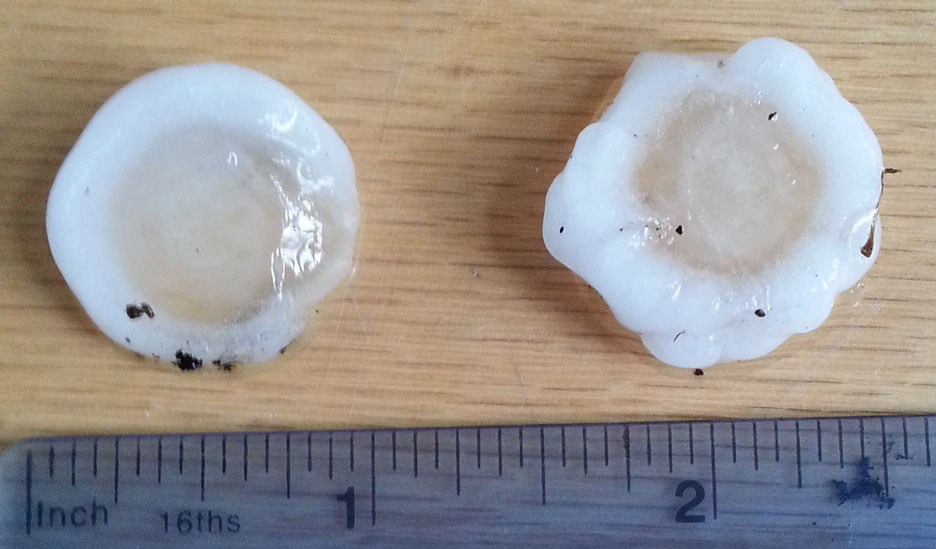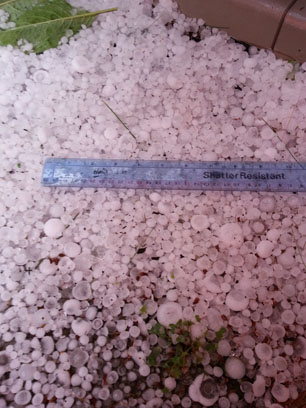
The odd ones, a type I'd never seen before, were somewhat lenticular, or perhaps could best be described as tire-shaped. Most of the stones of this type were like the ones shown, with fairly clear ice in the center, with more opaque whitish ice around their rims. This made them appear a bit like large eyes. Metric-oriented readers will recall that the inches shown on the ruler are each 2.54 cm. Here are some more examples of what fell from the sky: 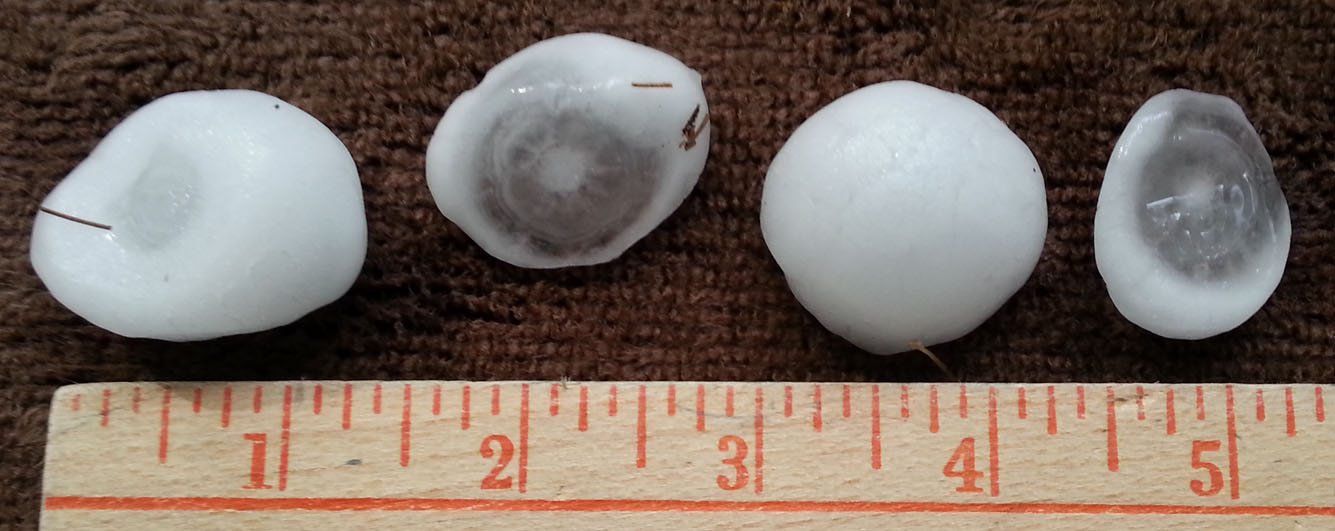 The first warning of the storm was a vicious gust of wind that briefly flattened our bushes. Our power went out, and our backup generator started. We then heard the loud noise of hailstones banging on our living room's skylights, although fortunately none of them broke. Click here to see a six-second video of the hail falling, which I've uploaded to YouTube. Note 1 If you know anything about this type of hail, such as what it's called, or how it's formed, please write and let me know! To the right, a large pile of hail in our back yard after the storm. You can see the large flat hailstones mixed in among many more ordinary hailstones of smaller size. I've tried to figure out how the large flat hailstones could have been formed. Obviously, normal hailstones are roughly spherical because there is nothing to distinguish any particular axis from any other. It seems to me that the flat hailstones must have been formed by spinning. That's the only thing, it seems to me, that can form hailstones in which one axis is distinguished from other possible axes. I've also done some Google searching to try to see if this type of hail has a particular name. A North Carolina State University web page on Precipitation Types has a picture of a hailstone similar to the ones I observed, unless the image is actually showing a slice of a more spherical hailstone. That page does explain the clear and cloudy parts of a hailstone, saying, "The opaque layers are created when the hail is in the colder section of the cloud, or gets caught in the downdrafts, and the supercooled droplets freeze onto the hail so quickly tiny air bubbles get trapped, causing the ice to look milky. When the hail falls into the warmer portion of the cloud, or into the warm updrafts, the supercooled droplets freeze slowly enough that the tiny air bubbles have time to escape before the water freezes, resulting in a sheet of clear ice." Some other web pages showing this type of odd hailstone can be found here, here, here, and here. After the storm ended, the sun came out, and most of the hail melted quickly, except where the rain had washed it into heaps. But a walk around the house showed quite a bit of damage to our plants. Below, the leaves on one of our hydrangeas:  Our driveway was littered with pine needles and small branches knocked down from the trees, as you can see on the left below. Walking down the street, the storm drains were surrounded by similar litter, washed into piles around the grates (below right). 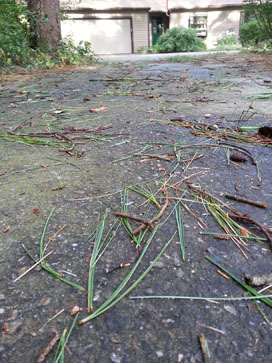 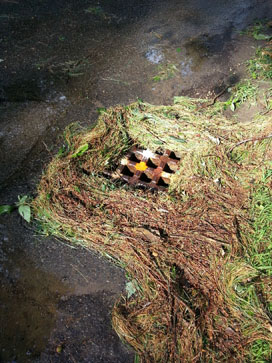 Our generator ran for about five and a half hours before utility power was restored. Of course, later in the day I added a line for that power failure to my ongoing power failure chart. September 20, 2015 update: My cousin Steve Krakauer sent me a link to a page with pictures of even odder hailstones. He noted that it also contains, about half way down the page, a brief explanation of how they are formed. Conrad Ziegler, of the National Severe Storms Laboratory, is quoted as saying, "Every stone takes a different path through the cloud. ... Often, storm winds will push stones around and give them a spin — they begin to rotate on an axis that further affects how droplets on the surface will collect and freeze." As I suspected, it has to involve spinning.   Note 1: If you want to download the original mp4 file, click here, but CAUTION: this is a 13 Mbyte file that takes a while to download. I've found that it opens properly in QuickTime, but plays sideways in the Windows Media Player. (I don't understand why it takes minutes to download my original file, but YouTube can display it instantly.) [return to text]  |
